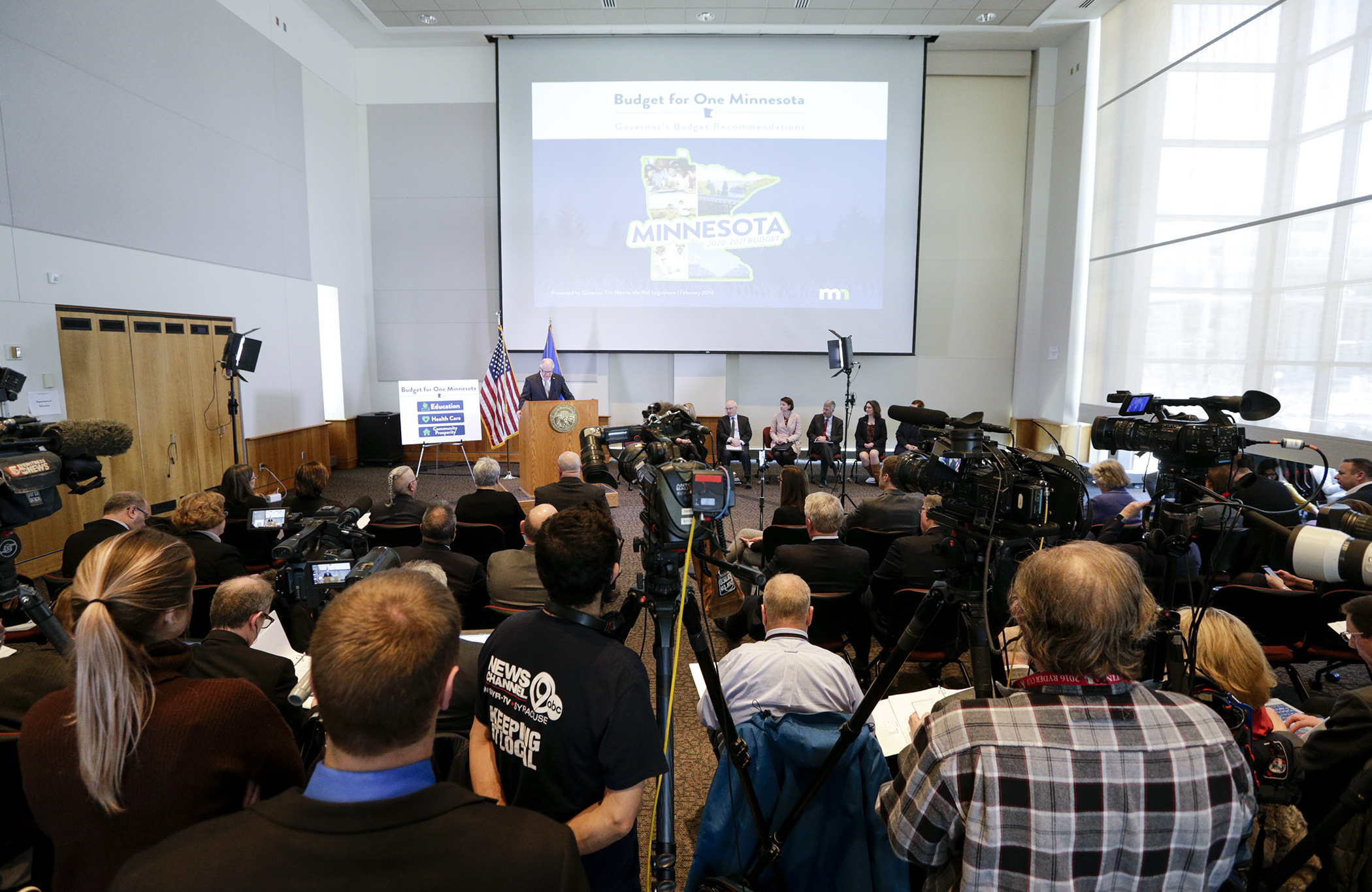Prevention key to health initiatives in governor’s proposed budget

Gov. Tim Walz’s 2020-21 biennial budget would provide $91.66 million for health programming, with a focus on prevention.
“We really see our role as supporting all three of those budget areas” prioritized by Walz, which include education, health, and community prosperity, Health Commissioner Jan Malcolm told the House Health and Human Services Finance Division Wednesday.
More than $26 million of the proposed health budget is dedicated to the protection of vulnerable adults, Malcolm said.
Of that amount, $15 million would be used to support current program improvements by increasing the state’s regulatory capacity and improving data analysis to help with prevention efforts, as well as creating a centralized framework for case management.
The department’s current system is “underbuilt, incomplete, (and) outmoded” and improvements are needed for better coordination with the Department of Human Services, increased efficiency, and greater efficacy, Malcolm said.
More than $11 million would fund regulatory reforms intended to prevent elder abuse, including the licensure of assisted living facilities, the establishment of standards for dementia care services, and the prohibition of deceptive marketing and false advertising. Walz proposed a 4-year implementation period for assisted living facility licensure, which would provide a transition period for providers and give the department time for hiring, training, and the rulemaking process – which would be used to clarify details and set specific standards for staffing and training, she said.
Other proposed budget increases include:
- $7.8 million for suicide prevention through community-based grant programs, school programming, and a state-based suicide hotline;
- $6 million to fund grants for family planning services intended to reduce unintended and teen pregnancies and to improve birth outcomes;
- $5.98 million for a departmental operating adjustment, to cover the costs of employee compensation, IT services, and leased spaces;
- $4.5 million to support tobacco cessation services through a statewide quitline, counseling, nicotine replacement therapies, and public awareness initiatives;
- $1.5 million for the Office of Medical Cannabis to meet increased demand and strengthen its IT systems and oversight;
- $1.5 million in a one-time-appropriation to replace outdated equipment and water and air purification systems at the Public Health Laboratory; and
- $606,000 to fund and improve provider network adequacy reviews.
The budget provisions would be funded by $48.88 million from the General Fund, $12.78 million from State Government Special Revenue – fees and fines collected by state health programs, which the department needs legislative approval to use – and $1 million from the Health Care Access Fund.
A $13.7 million appropriation from the Clean Water Fund would be used to support eight initiatives intended to integrate drinking water protection strategies with broader water safety efforts.
An additional $15.2 million would address the opioid epidemic by expanding access to naloxone, a medication used to reverse opioid overdoses, support local pilot programs, provide grants to tribal governments and Native American organizations, and fund related efforts.
These measures are supposed to be financed by funds generated through an “opiate product registration fee,” outlined in HF400, sponsored by Rep. Liz Olson (DFL-Duluth). The bill has no Senate companion and awaits action by the House Judiciary Finance and Civil Law Division.
The budget also includes $321,000 in savings from the repeal of an unnecessary infection control law recommended by the department. The law is outdated and duplicative, Malcolm said.
Related Articles
Search Session Daily
Advanced Search OptionsPriority Dailies
Ways and Means Committee OKs proposed $512 million supplemental budget on party-line vote
By Mike Cook Meeting more needs or fiscal irresponsibility is one way to sum up the differences among the two parties on a supplemental spending package a year after a $72 billion state budg...
Meeting more needs or fiscal irresponsibility is one way to sum up the differences among the two parties on a supplemental spending package a year after a $72 billion state budg...
Minnesota’s projected budget surplus balloons to $3.7 billion, but fiscal pressure still looms
By Rob Hubbard Just as Minnesota has experienced a warmer winter than usual, so has the state’s budget outlook warmed over the past few months.
On Thursday, Minnesota Management and Budget...
Just as Minnesota has experienced a warmer winter than usual, so has the state’s budget outlook warmed over the past few months.
On Thursday, Minnesota Management and Budget...